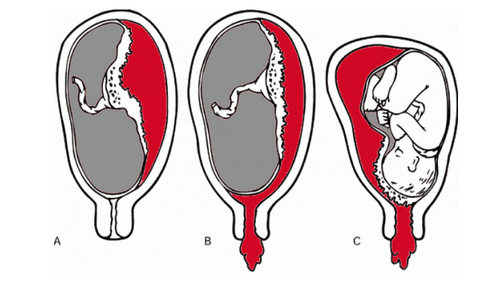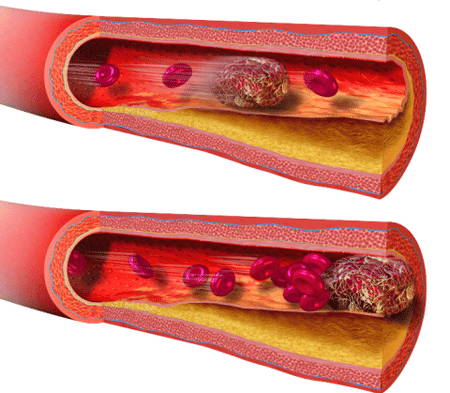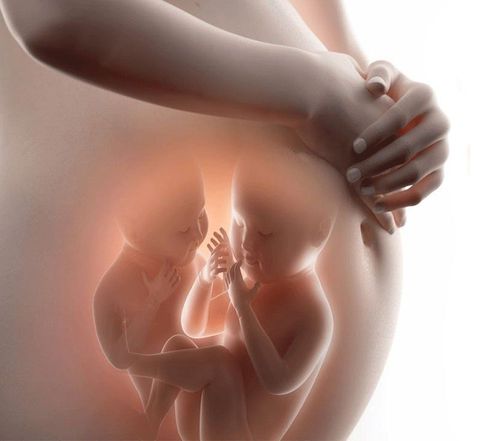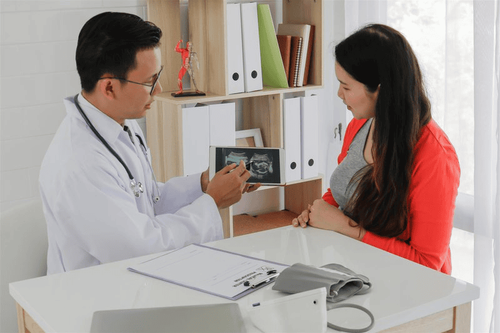This is an automatically translated article.
The article was professionally consulted by Dr. Nguyen Anh Tu - Doctor of Obstetric Ultrasound - Prenatal Diagnosis - Obstetrics Department - Vinmec Hai Phong International General Hospital.The older the gestational age, the higher the maturity of the placenta, but in each person, the expression is different, depending on each person, the process of calcification of the placenta takes place quickly or slowly.
1. The phenomenon of placental calcification
Placental calcification is the deposition of calcium between the placenta and the uterine muscle, occurring in near-term pregnancies. Through placental calcification, the doctor also assesses the maturity of the fetus.
2. The degree of calcification of the placenta
The degree of calcification of the placenta is divided into three levels, the highest degree of maturity of the placenta is level 3. The older the gestational age, the higher the placenta's maturity, but in each person the expression is different, depending on For each person, the process of calcification takes place quickly or slowly. The older the gestational age, the more calcified clusters.On ultrasound, the placenta will be evaluated for calcification with the following levels:
Grade 0: gestational age about 31 ± 1 week; Grade 1: gestational age 34 ± 3.2 weeks; Grade 2: gestational age 37.6 ± 2.7 weeks; Grade 3: gestational age 38.4 ± 2.2 weeks; When the third degree of calcification shows that the fetal lung function has begun to perfect, the baby can gradually adapt and can fully live when out in the environment.
The older the gestational age, the higher the maturity of the placenta, but in each person, the expression is different, depending on each person, the process of calcification of the placenta takes place quickly or slowly.
3. When is placental calcification dangerous?
Most pregnant women, when reading the ultrasound results, find that they have placental calcification, they are very worried, afraid that the placenta will calcify quickly, the nutrition through the placenta will be slower to nourish the fetus. However, most placental calcification is not a cause for concern. This only indicates the maturity of the fetus, but does not mean that the placenta is degenerated.
But in some cases, a large accumulation of placental calcification can cause some of the following effects:
Accumulation of calcium in certain areas will cause fibrosis in that area and cause blockage of some blood vessels in the placenta . If stage 3 calcification occurs from early weeks of pregnancy, it will make the transmission of nutrients from mother to baby will be poor, the fetus in the abdomen can absorb less nutrients, leading to cell malnutrition. pregnant. Postpartum pregnancies and highly calcified placenta are at higher risk of fetal distress due to severe hypoxia. These fetuses will also have a mortality rate 3 times higher than other fetuses. If it lasts until 42 weeks, placental calcification will occur even faster. Blood concentration in the placenta will decrease, making oxygen exchange difficult. This condition, if prolonged, can lead to fetal distress, fetal death during labor or death shortly after birth, or affect the development of the baby due to lack of oxygen in the brain.

Therefore, for all pregnant women, even the diagnosis of calcification or non-calcification of the placenta, pregnant women also need to see a doctor according to the indications and appointments of the doctor. When the fetus is full term (through ultrasound assessment of the amount of amniotic fluid, placental calcification...) and the pregnant woman still has no signs of labor, the doctor will have indications for timely intervention to Best for mother and baby health.
In the last months, pregnant women not only face the risk of low amniotic fluid, polyhydramnios, high placental calcification, but also many other health problems. In order for the birth to go well, in the last 3 months of pregnancy, the health of both mother and baby needs to be closely monitored and checked. Pregnant women need to recognize the signs of labor, distinguish physiological contractions to go to the hospital early for timely delivery.
To protect the health of the mother and baby comprehensively as well as help the mother feel more secure during labor, Vinmec provides a package Maternity service, which helps doctors monitor the health of mother and baby right from the beginning of the pregnancy. period, early detection and timely intervention of health problems. In particular, with the strength of being able to diagnose and detect fetal abnormalities early, Vinmec has helped many couples have a safe and healthy birth. Mother and baby will have skin-to-skin care, comprehensive health care after birth before going home.
Doctor Nguyen Anh Tu has 6 years of experience in obstetrics and gynecology ultrasound, specially researched and trained in pregnancy ultrasound - prenatal diagnosis. Dr. Tu has completed courses on ultrasound - prenatal diagnosis of the FMF International Fetal Medicine Association; trained in consulting and implementing diagnostic intervention techniques in fetal medicine and participated in many specialized conferences and seminars on Fetal Medicine. Currently a doctor at the Department of Obstetrics and Gynecology, Vinmec Hai Phong International General Hospital
Please dial HOTLINE for more information or register for an appointment HERE. Download MyVinmec app to make appointments faster and to manage your bookings easily.














